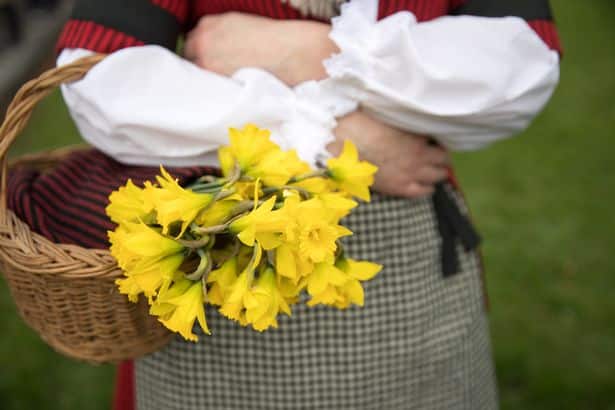People often refer to Donegal Square as “the Irish store”. In fact, we represent many of the Celtic nations, including the small but mighty Wales! March 1 is St. David’s Day celebrating the patron saint of Wales who is said to have died on that day in the year 589.
Welsh Symbolism
Several symbols are closely associated with Wales. One of the best known is the red dragon. Its use dates back to the 9th century and it is said that the wizard Merlin envisioned a battle between red dragons (representing the native Britons) and white dragons (representing the Saxon invaders), with the red dragons emerging victorious. The Welsh flag incorporates the red dragon and the Tudor colors of red and green.
The leek is the national emblem of Wales. According to legend, St. David ordered his Welsh soldiers to identify themselves by wearing the leek on their helmets in an ancient battle against the Saxons that took place in a leek field. Leeks are still worn on St. David’s Day every March 1. Daffodils, the national flower of Wales, are also worn on St. David’s Day and are known in Welsh as “Peter’s leek”.
Celebrating St. David’s Day
St. David’s Day is a celebration of Welsh heritage and culture in Wales and in Welsh areas throughout the world. Traditonal festivities include wearing leeks and daffodils, eating traditional Welsh foods including cawl (soup), bara brith tea loaf and Welsh Rarebit, and women wearing traditonal Welsh dress. An increasing number of cities and towns throughout Wales host St. David’s Day parades, and other events include concerts and sporting events.
The Welsh in Pennsylvania
Our home state of Pennsylvania boasts a significant Welsh population. In the colonial era, Philadelphia, with its large Welsh population, became one of the important cities in America. Welsh immigrants tended to stick with the professions they knew in their old country. As a result, slate quarrymen went to the Delaware Valley and coal miners found employment in Pottsville, Wilkes-Barre and Scranton. The city of Scranton leads the way in maintaining a Welsh American identity. Throughout the US (per the 1990 census), two million reported their ancestry as Welsh.
